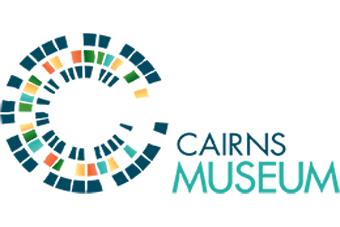The Orator’s Chair – a chair not to be sat upon!
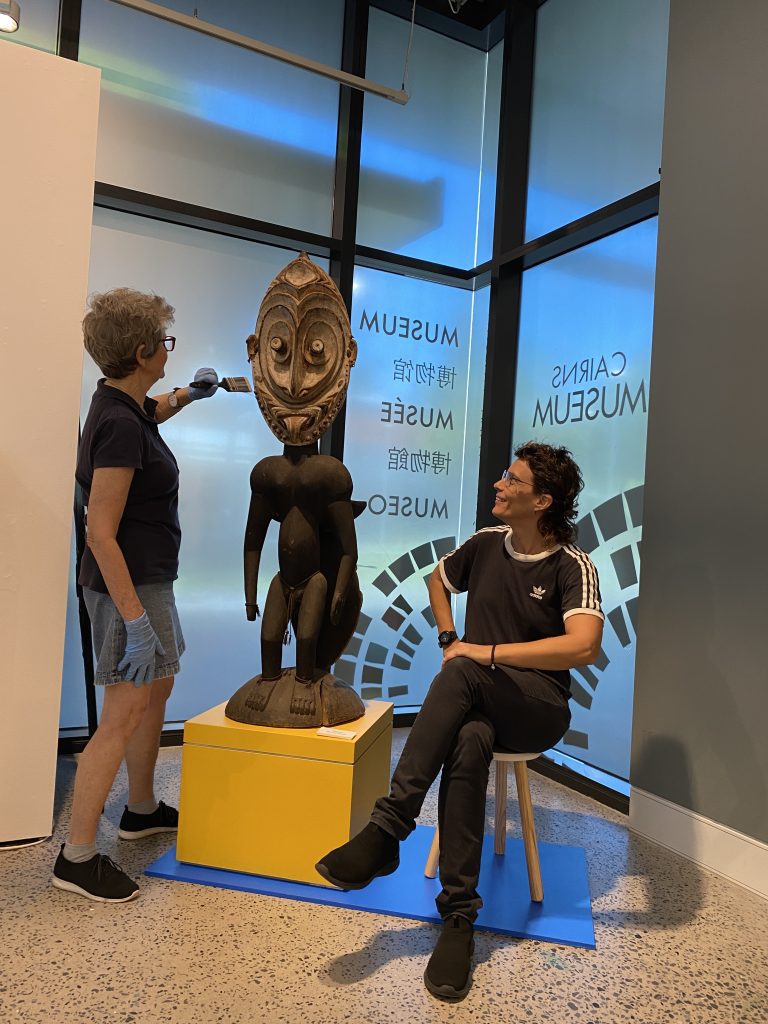
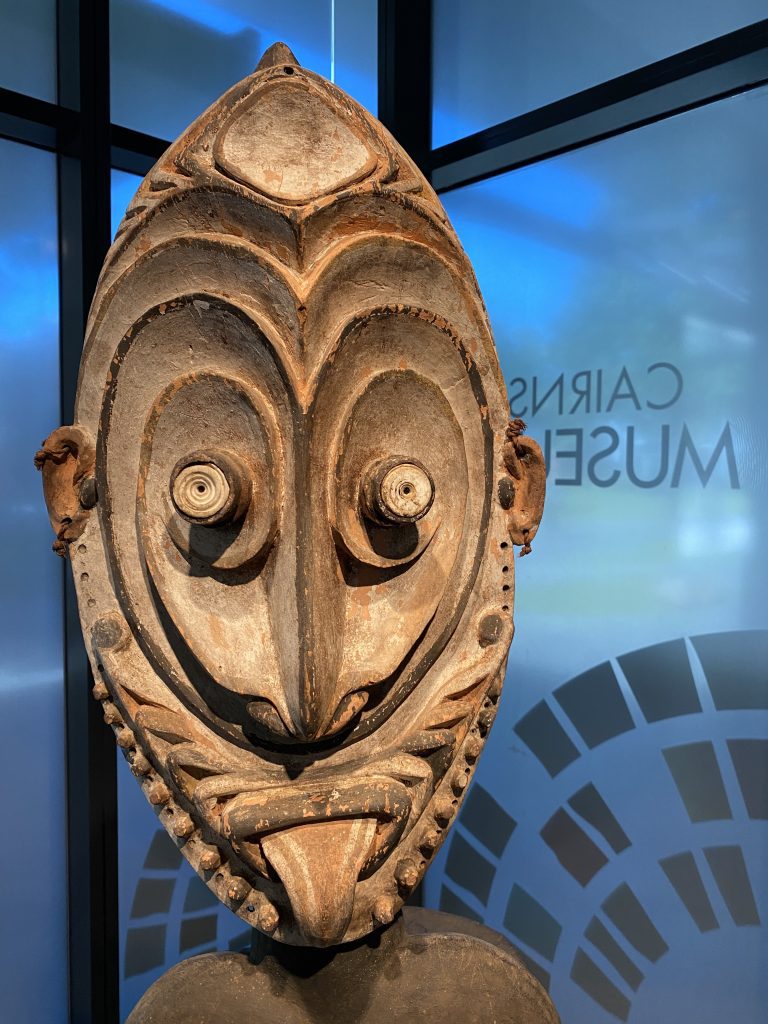
(L-R): Installation of the Chair, Cairns Museum, Photo: Michael Marzik. Close up of the Orator's Chair, Photo: Daniela Vávrová. The history of Australian Patrol Officers in Papua New Guinea is not well known to younger generations of people living in Australia. Dr Laurie Bragge served in his youth as one of the Patrol Officers, or Kiap, as the local people called the Australian authorities. Laurie lived and worked in PNG between 1961 and 1978.
He kept rich field diaries and recorded interviews with wise local elders in addition to his official patrol reports. Laurie emphasises that people wanted him to listen and record the oral histories for the future generations. Bragge’s collection of photographs, books, official records, numerous artefacts with detailed provenance, written monographs, and more, were donated to James Cook University in 2018.
He was awarded the honorary title Doctor of Letters after his collection found its new home at JCU.
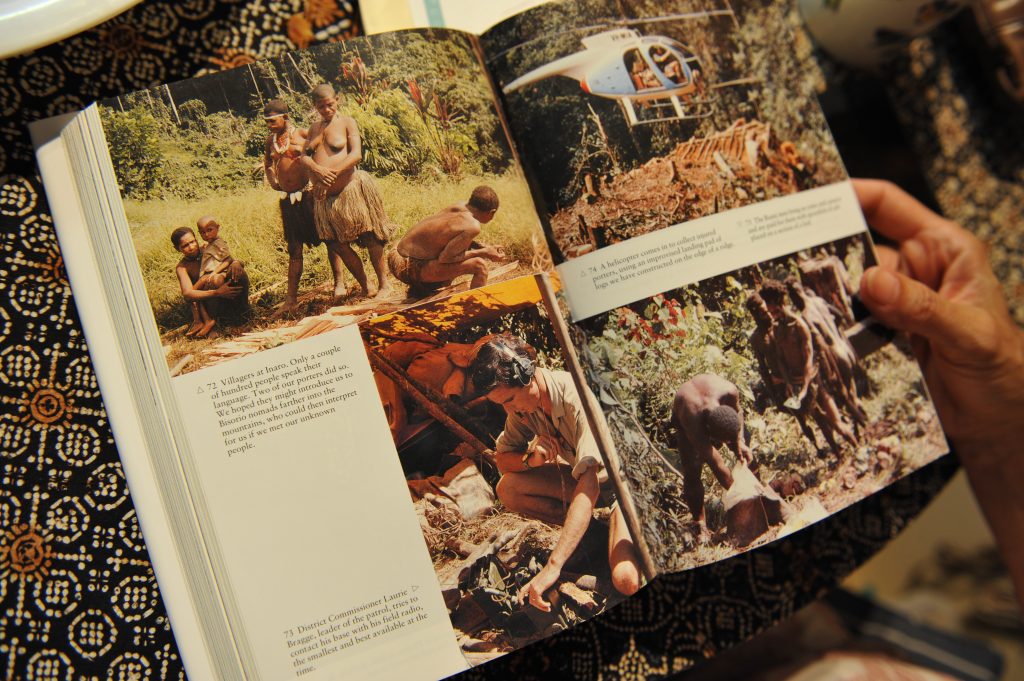
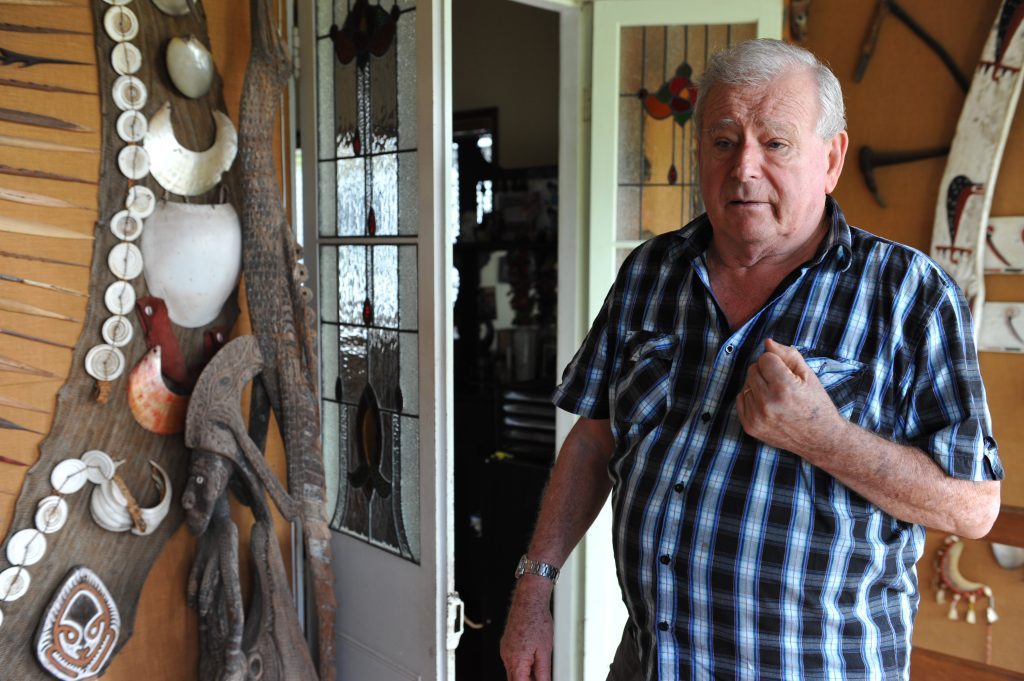
(L-R): Dr Laurie Bragge features in David Attenborough’s Life on Air, 2010. Photo: Daniela Vávrová. Laurie at his home in Cairns prior to relocating the artefacts to JCU, 2017. Photo: Daniela Vávrová In our current temporary exhibition entitled 50 Treasures Revisited – Celebrating 50 Years of James Cook University, the Tegoi Orator’s Chair is a component from the Bragge Material Culture Collection and accompanies the thirtieth treasure – Laurie Bragge’s Kiap period photo albums volume 1 and volume 2.
This carved, wooden Orator’s Stool was obtained from a Iatmul – speaking Tegoi villager in 1972 during the Ambunti Patrol in the Middle Sepik Province of PNG. The ceremonial chair was carved from one piece of timber and although it appears to look like a functional seat, it is designed not to be sat upon.
Orator’s Stools were used as debating lecterns during village meetings, discussions and rituals in traditional, ancestral men’s houses known as Haus Tambarans. The orators would walk around the chair which was positioned in the middle of the house. The speaker voiced his opinion and told his argument and then invited others to continue in support or against the argument.
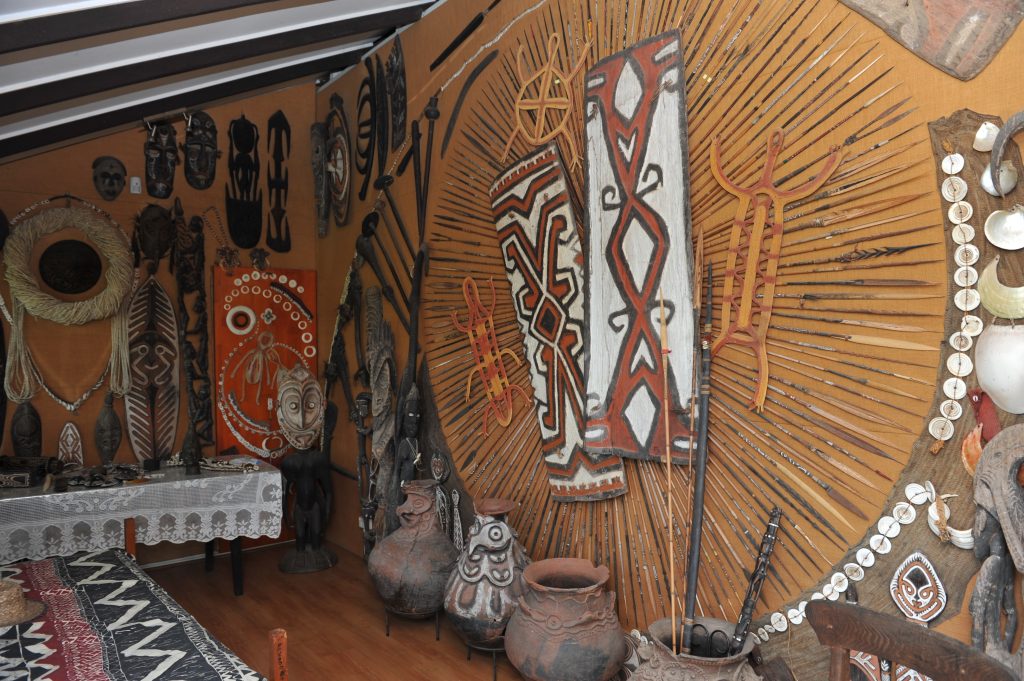
The people of Middle Sepik believe that spirits inhabit everything in the natural world. The figure that is carved at the front facing part of the stool serves as a temporary vessel for the ancestral spirit who presides over the meetings to ensure that speakers are orating truthfully.
The human figure with an expressive face, eyes and poking-out tongue is a common feature of Sepik River art. These figures often had an elongated head and torso and shortened limbs. Special emphasis was placed on the head (through its exaggerated size and shape) to show that it is the most important part of the body, where the spirit resides.
The Orator’s Stool, in the context of the 50 Treasures Revisited Exhibition, is symbolic of Far North Queensland’s connections, going beyond its borders, to neighbouring countries and their communities.
Dr Laurie Bragge will join us and talk about his time as Australian Patrol Officer in PNG on Thursday 28 September, 2023, at the regular Cairns Historical Society Members Social Group Meet and Memory Morning Tea held the last Thursday of every month.
Written by Daniela Vávrová, Bernadette Boscacci, Bronwyn McBurnie, and Laurie Bragge.

